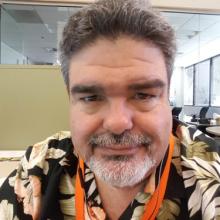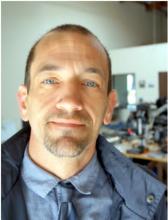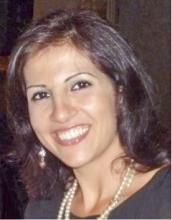Controlling Inverters with Advanced Grid Functions

Mr. Mark Baldassari
Director of Codes and standards
Enphase, Petaluma, CA
Thu, 10/20/2016
Abstract – Solar Power and Photovoltaic technology is advancing quickly in the industry. Enphase Energy is a leader in developing technologies to meet the market demands. This talk will introduce basic concepts around solar systems. It will address the disadvantages of traditional systems versus the advantages of advanced microinverters from Enphase Energy. Data communications plays a vital role for a modern system. Enphase Energy addresses these challenges with a multi-processor, advanced communication, architecture. Finally, energy storage systems are gaining acceptance in the market. In the near future these systems will be commonplace. Battery chemistry plays a significant role in defining performance, safety and cost. From home sized systems to utility scale.
Mr. Mark Baldassari has over 30 years’ experience in engineering and product development and over 7 years with Enphase Energy, where he holds the position of Director, Codes and Standards. Currently, he actively participates in a number of Codes and Standards development groups both internationally and domestically. Domestically, Mr. Baldassari regularly participates in IEEE 1547 series of standards development with emphasis towards improving the grid integration of PV systems. He is involved with Underwriters Laboratory working on the harmonization of UL and IEC standards and a member of the UL 1699B Standards Technical Panel (STP) for DC Arc- Fault equipment. Mr. Baldassari is an active member of the SEIA Codes and Standards and SolarABCs PV Industry Forum. He is very involved with the drafting of the 2014 and 2017 NEC for articles 690 and 705 having been chairman of the Arc-Fault task group and active participant in the drafting sections on Disconnecting Means, Grounding, and Rapid Shutdown. Mr. Baldassari has bachelor degree in Electrical and Electronic Engineering from California State University Sacramento, USA.
Internet of Things (IoT) based Environmental Monitoring Systems

Mr. Shivakumar Mathapathi
Co-Founder and CTO
Dew Mobility, CA
Thu, 10/06/2016
Abstract – With recent development in Internet of Things (IoT), several environmental researchers, scientists, Government and Corporates initiated monitoring the environmental parameters. The system is made up of three layers such as sensor layer, Hardware layer and Cloud layer. It makes it possible to sense, acquire, process and transfer environmental information over a large area in real time. With today’s lecture, the goal is to demonstrate few of the environmental sensors such as temperature, humidity, air quality, CO2, light and pressure sensors interfacing with ARM Mbed microcontroller (MCU) and transferring into the Amazon Web IoT services. Once the Environmental information is available at the cloud, we could monitor the data on mobile phone as well on the desktop/Laptop computers. One could provide the data analytics to end users utilizing analytics tools offered by various Cloud providers such as IBM Bluemix, AWS IoT, Microsoft Azure, and GE-Predix. The lecture session helps attendees to learn these IoT technologies and services.
Mr. Shivakumar Mathapathi has over 25 years of experience in product development, design and faculty. Mr. Mathapathi is a seasoned technologist, entrepreneur, instructor and practitioner on the Internet of Things (IoT) with extensive experience as lead faculty, lab-practice and mentorship in executing smart city, smart agriculture, assisted living and other IoT related projects. He has designed study programs and academic syllabus for “The IoT course” a 4- units Master of Science course taught at Santa Clara University and CA Polytechnic State University. He led the capstone design project at Cal Poly San Luis Obispo to design and develop IoT cloud platform. He is the Capstone Lecturer at MS Information System, Smart City project, Leavey School of Business, Santa Clara University, and served as lead instructor for IoT course at Cal Poly, San Luis Obispo.
UAS - In the Coming Robotic Revolution, The first wave of attack

Mr. Sean Headrick
Founder/CEO
AeroTestra, Inc.
Thu, 09/15/2016
Abstract – Unmanned aircraft have opened possibilities we have only imagined. Moreover, the democratization of this technology has put its potential within the grasp of anyone willing to explore. This lecture will look at the current state of unmanned aircraft systems and the roles that are emerging in the commercial sector. Focusing primarily on “remote sensing”, we will discuss applications including “structure from motion” or photogrammetry, hyperspectral and multispectral imaging, as well as water quality monitoring. We will also look forward to how this field may evolve leveraging technologies like machine learning, computer vision and rapidly increasing processing power. As a developer of UAS we will explore the unique approach to aircraft design for these applications, looking at platform reliability, sensor selection, and optimizing for specific data collection. This will be followed by a Q&A session, to explore in more detail, subjects of interest to those attending.
Mr. Sean Headrick is CEO and Founder of Aerotestra which he started in 2012, and is proud to be an advocate for, and contributor to the exciting robotics evolution we are experiencing today. A self taught designer and “engineer”, he spent the majority of the past 25 years designing and building everything from cabinets and furniture to treehouses and all variety of things in between. His current project, developing unmanned aircraft systems, has tapped into several passions at once that he hopes to share and learn from this ever growing community.
5G Mobile Communications: The Vision for 2020 and Beyond (2016)

Mr. Roger Nichols
5G Program Manager
Keysight Technologies, Santa Rosa, CA
Thu, 09/01/2016
Abstract – With barely 15% of the world’s mobile subscriptions served by 4G, the industry is already well under way in defining the next generation of wireless communications known as “5G”. Envisioned for commercialization in late 2020, 5G will be “Amazingly Fast with Great Service in a Crowd”. It will have the “Best Experience Following You with Super Real Time and Reliable Communications” and “Ubiquitous Things Communicating”. This vision outlined by the METIS consortium represents a revolution in the way we think about mobile communications. Research is still happening but some of this work has shifted now to active development while mobile operators from multiple countries are trialing early prototype systems. This presentation will cover the industry drivers, an examination of some of these enabling technologies, the current state of the industry’s development, and how measurement is critical to the process.
Mr. Roger Nichols is the 5G Program Manager for Keysight Technologies (formerly Keysight Technologies Electronic Measurement Business). His nearly 30 years of experience in the wireless industry spans various roles in Manufacturing and R&D and crosses the evolution from analog cellular radio through LTE and beyond. He spent the last ten years as the Marketing Director for Keysight’s Mobile Broadband Operation responsible for delivering the Wireless Test sets and systems which are used in all major design and certification labs as well as manufacturing facilities worldwide.
Material Characterization Techniques Using the Keck Microanalysis Laboratory

Dr. Sara Kassis
Lecturer
ES Department, Sonoma State University, Rohnert Park, CA
Thu, 04/21/2016
Abstract – Characterization techniques are essential to observing behavior and properties of materials. It is especially useful to investigate the structural and surface properties of materials at the microscopic level since the behavior in this regime dominates our current technology using semiconductors, which are the key components in making digital processors found in computers and other devices function. This talk will focus on how the instruments in the Keck Microanalysis Laboratory at SSU can be utilized to investigate properties of materials.
Dr. Kassis received her PhD in Condensed Matter Physics from Kent State University. Her experience includes over 10 years of teaching physics and engineering at various universities. Her research interests include materials engineering and characterization, nanomaterials, and low temperature physics.